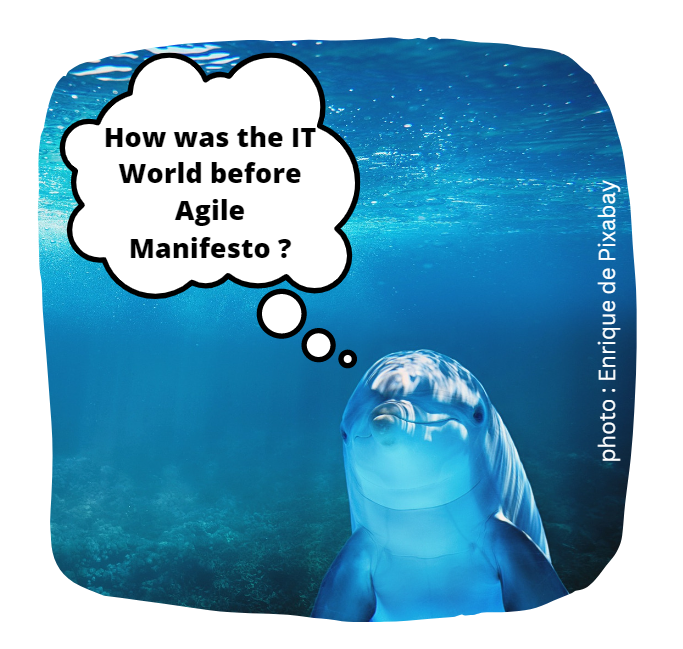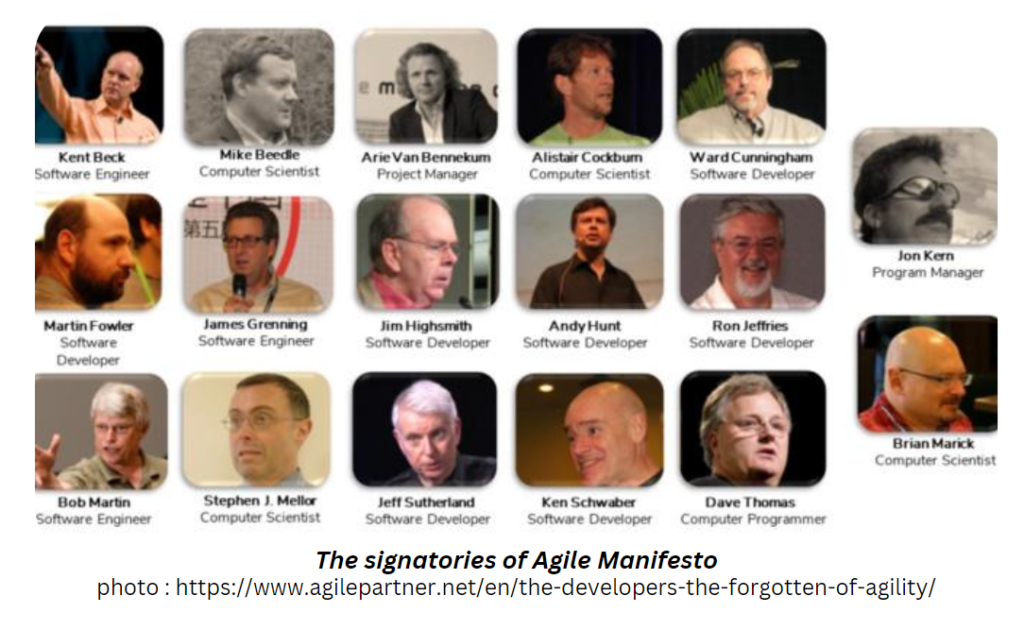[Sprint Inter(e)view] Alistair Cockburn – Part 1

I interviewed Alistair Cockburn !
This famous computer scientist is one of the initiators of the agile movement in software development and co-signatory of the Agile Manifesto.
Want to learn more about the IT world before the agile manifesto, and its genesis? But also on Alistair and the profile of the other signatories? Then this interview is for you (1/3)!
ABOUT DR. COCKBURN
Tell us a little about yourself (your PhD, your jobs, your hobbies).
Probably the most significant thing I’ve learned about myself is that I grew up traveling the world and living in different cultures: Sri Lanka, Bangladesh, USA, Sweden, Scotland, Switzerland, Norway, France, Australia, Argentina. I got my PhD in Norway. Hence, I have to accept all cultures as valid and not try to change them. This applies to my consulting, as anyone might notice.
My main hobby is traveling and meeting people. After that, dancing, pretty much any kind. After that swimming, ideally underwater with fish.
How many languages do you speak ?
It varies by year. At one point Swedish, Norwegian, German, Swiss German (Zurich dialect), French, English. But then my Swedish and Norwegian got muddied together so I had to forget Norwegian to protect my Swedish. Then I learned Spanish. Now I’m not sure Swedish is still good. Each of these languages at a level I could teach classes in them. I now teach in French, Spanish and English. The others just for the rare social occasions.
How many languages do you code?
I started with Algol, moved to Simula67, from there toSmallTalk, from there to Ruby. Learned Javascript on the fly for a while. Passed through Pascal, Basic and Assembler. Currently only Ruby is meaningful. I don’t know how to touch an IDE any more (haha), so I discuss the design while the other person drives the IDE.
Where are you now ?
I bought a house in the Tampa, Florida area during Covid times, when I knew there wouldn’t be travel. I still travel often to Chile, Argentina, Colombia, Ecuador and Europe for clients and to see friends.
If you were an animal, what would you be? and why?
A dolphin. I love water and swimming, especially underwater – recreational free-diving (apnea) just to be with the fish. Dolphins are also very social, play, and pretty much do what they want :)).

BEFORE AGILE MANIFESTO
How was the IT World before Agile Manifesto? What were the weakness of waterfall projects and other IT projects?
I started consulting in 1991. Incremental development was already a known “best practice”, but we couldn’t get most of our clients to do it. The better small teams were doing this standardly, but couldn’t get their organizations to accept it.
In my major project in 1994, the client already had user-centric, incremental-iterative with staged delivery well in hand, so that was an easy situation. Aside from that client, most of our energy was just to get any kind of incremental-iterative to happen.
The web changed a lot – there was no way to develop websites with linear thinking, so suddenly that part of the conversation went away, except to try to convince all the people around them to try it.
Did you know the other 16 signatories before?
Some. None of us knew everyone, although there were overlapping groups. Arie von Bennekum was new to everyone, as he was only notified about the workshop a week in advance. He jumped on a plane, stayed for 2 days, and jumped back.
Did the signatories have the same profiles (technical, management) and the same seniority?
I think everyone had been a programmer in their life, but only a few were still active programmers. Brian Marick was a testing specialist, Jim Highsmith, Steven Mellor and I were pretty much in the process space by then, and so on. There was a large age difference from the youngest to the oldest, but all had significant years of practice behind them. The experience level was very high, as shown by the quality of the conversations.

Can you tell us about Agile Manifesto Genesis (thinking, meeting, etc.)
Hmmm, a long story. I gave a number of interviews in 2021 on just this question – see:
* The interview with Geir Amsjø: https://vimeo.com/511574656
* The Agile Uprising interviews:
https://coalition.agileuprising.com/t/podcast-updated-alistair-cockburn/680
https://agileuprising.libsyn.com/manifesto-co-author-interview-alistair-cockburn
* My description of 3 decades of agile: https://www.youtube.com/watch?v=fG6N-QNDblM
In short, I see it as a conjunction of 3 sets of overlapping conversations that were in play in the 1990s:
1 – The patterns movement. The patterns community had been holding a certain type of very affirmative yet critical discussion since the early 1990s. A number of the manifesto authors had participated in those and were familiar with that style of dialogue, at least Ward Cunningham, Kent Beck, Martin Fowler, Mike Beedle and me.
I think that is the main reason the workshop worked so well.
2 – The WOOD workshops, 1993-1998. The “Workshop on Object-Oriented Design” was organized by Jon Hopkins, who liked to ski, hence Snowbird in February :). In 1994, he had Ivar Jacobson, Adele Goldberg, James Rumbaugh, Ward Cunningham, Kent Beck, Martin Fowler, Larry Constantine, and me all there. Just wow.
I was the orchestrator for the manifesto meeting, so I modeled the manifesto meeting after the WOOD workshops. A number of the manifesto authors had been at the WOOD workshops, where we also held a very relaxed and friendly style of dialogue. So, at the manifesto meeting, we already had me, Martin Fowler, Ward Cunningham, and Kent Beck, who had lived in the dialog cultures of both WOOD and patterns workshops. This experience sets a tone for a meeting, held in place by at least four or five people (including here Mike Beedle)
3 – Light methodologies. In the second half of the 1990s, a number of us had hit on lightweight, human-centric approaches. My own started in 1992 and was used on the big project in 1994. Scrum was in industrial use by the mid-90s, XP was in industrial use in the US, FDD also, in Australia, and DSDM in Europe. The “pragmatic programmers” had their book out.
